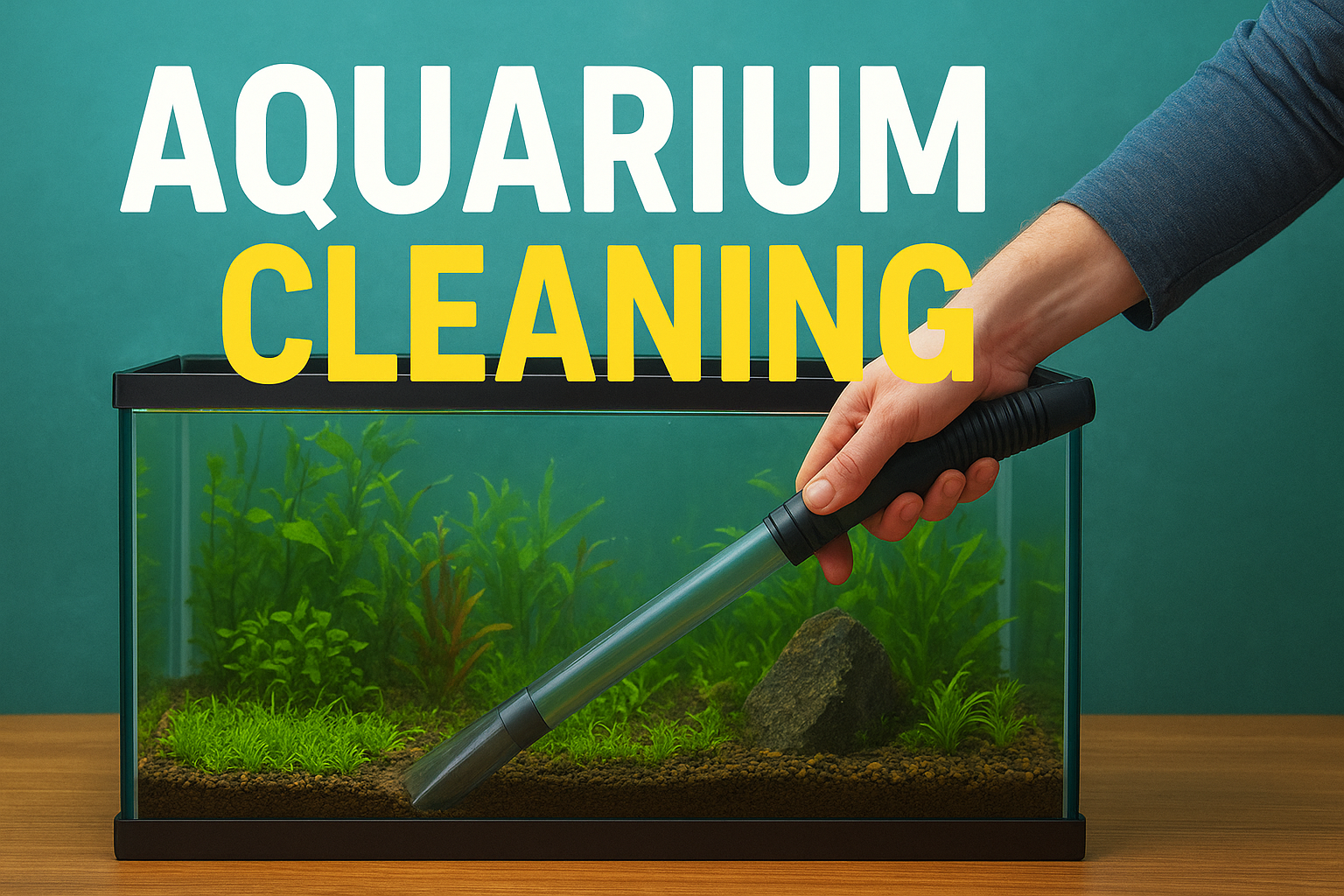Aquarium cleaning is one of the most essential aspects of fishkeeping. While aquariums add beauty to homes and provide a calming atmosphere, they require regular maintenance to ensure the well-being of fish, plants, and other aquatic life. Poor water quality and unclean tanks often lead to fish stress, algae growth, and even disease outbreaks.
Cleaning an aquarium isn’t just about scrubbing the glass—it involves maintaining water chemistry, cleaning the substrate, caring for filters, and ensuring the entire environment stays balanced. This guide provides an in-depth understanding of aquarium cleaning, covering everything from basic tools to advanced tips, so your aquarium remains a safe and thriving ecosystem.
Why Aquarium Cleaning is Important
Aquarium cleaning plays a vital role in maintaining a healthy aquatic environment. Some key reasons include:
- Water Quality Maintenance – Cleaning prevents ammonia, nitrite, and nitrate buildup.
- Algae Control – Regular cleaning minimizes algae growth on glass, decorations, and substrate.
- Fish Health – Clean water reduces stress and lowers the risk of diseases.
- Aesthetic Appeal – A clean aquarium looks visually stunning and enhances your living space.
- Balanced Ecosystem – Proper cleaning ensures beneficial bacteria thrive while harmful waste is removed.
Essential Aquarium Cleaning Tools
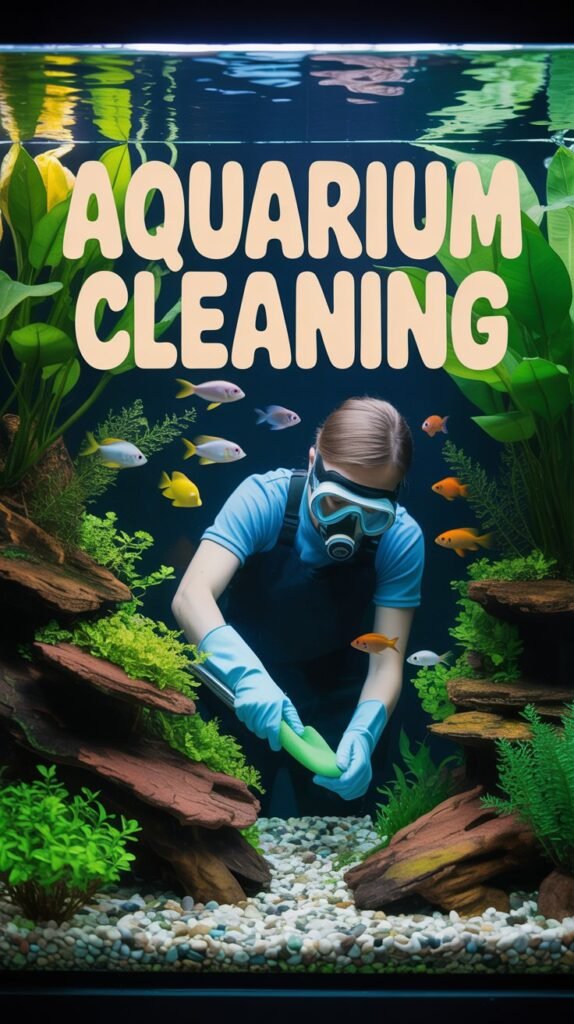
Before starting, having the right tools makes the job easier and more effective:
- Algae Scraper or Magnet Cleaner – For removing algae from glass.
- Gravel Vacuum (Siphon) – To clean debris and waste from the substrate.
- Fish Net – For gently moving fish when necessary.
- Bucket (Dedicated Only for Aquarium Use) – To avoid chemical contamination.
- Filter Brush and Cleaning Sponges – For cleaning filter components.
- Aquarium Safe Water Conditioner – To neutralize harmful chlorine or chloramine in tap water.
- Aquarium Towels – For drying hands and cleaning drips.
- Test Kits – To check water parameters like pH, ammonia, nitrites, and nitrates.
Step-by-Step Guide to Aquarium Cleaning
1. Preparation
- Turn off electrical equipment like filters, heaters, and lights.
- Wash your hands with water only (avoid soap and chemicals).
- Gather all cleaning supplies near the aquarium.
2. Clean the Glass
- Use an algae scraper or magnetic cleaner to gently scrub the inside walls.
- Work from top to bottom to prevent debris from spreading.
3. Clean Decorations and Rocks
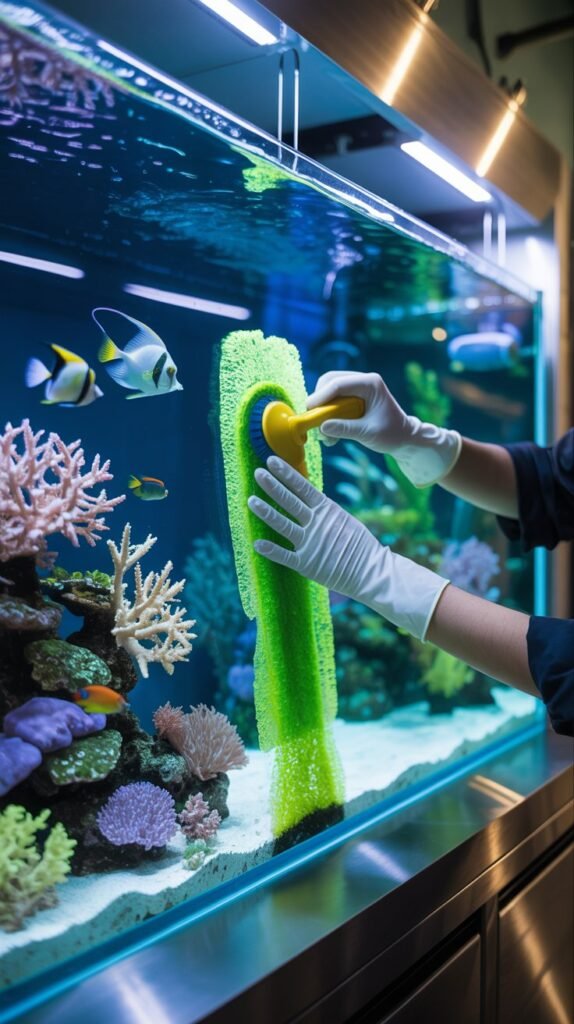
- Remove any decorations with visible algae.
- Scrub them with a soft brush in old tank water (never use soap).
- Place them back after rinsing thoroughly.
4. Substrate Cleaning (Gravel Vacuuming)
- Insert a gravel vacuum into the substrate.
- Let it siphon out debris, leftover food, and fish waste.
- Avoid removing more than 25–30% of the water at once.
5. Partial Water Change
- Replace old tank water with dechlorinated tap water.
- Ensure the new water matches the tank’s temperature.
- Water changes should be done weekly or biweekly depending on stocking levels.
6. Filter Maintenance
- Rinse filter media in old tank water to preserve beneficial bacteria.
- Clean impellers and tubing to ensure smooth water flow.
- Replace filter cartridges only when necessary.
7. Glass Exterior Cleaning
- Wipe down the outside glass with a damp cloth.
- Avoid using window cleaners as they contain harmful chemicals.
8. Restart Equipment
- Reconnect and power up filters, heaters, and lights.
- Ensure everything is working correctly.
How Often Should You Clean Your Aquarium?
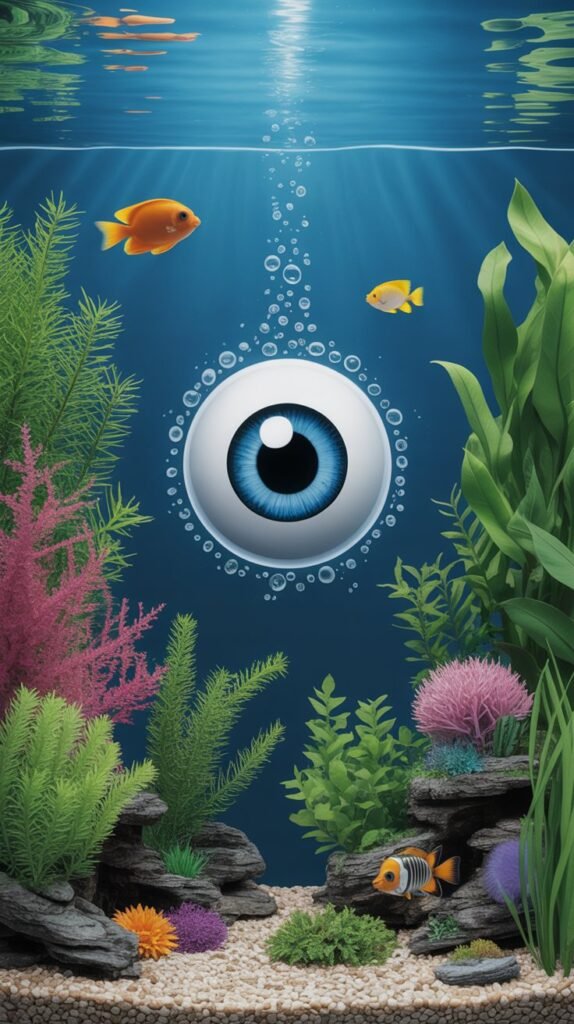
The cleaning frequency depends on several factors:
- Small Aquariums (5–10 gallons): Weekly cleaning and 25–30% water change.
- Medium Aquariums (20–40 gallons): Every 2 weeks with partial water changes.
- Large Aquariums (50+ gallons): Monthly cleaning, but weekly water testing.
- Heavily Stocked Tanks: Require more frequent cleaning.
- Planted Aquariums: Need less frequent cleaning due to natural filtration by plants.
Aquarium Cleaning Mistakes to Avoid
- Overcleaning – Eliminates beneficial bacteria.
- Using Soap or Detergents – These are toxic to fish.
- Changing All Water at Once – Causes shock to fish.
- Ignoring Filters – A dirty filter can crash the tank cycle.
- Cleaning Everything at Once – Always clean in stages to maintain biological balance.
Advanced Aquarium Cleaning Tips
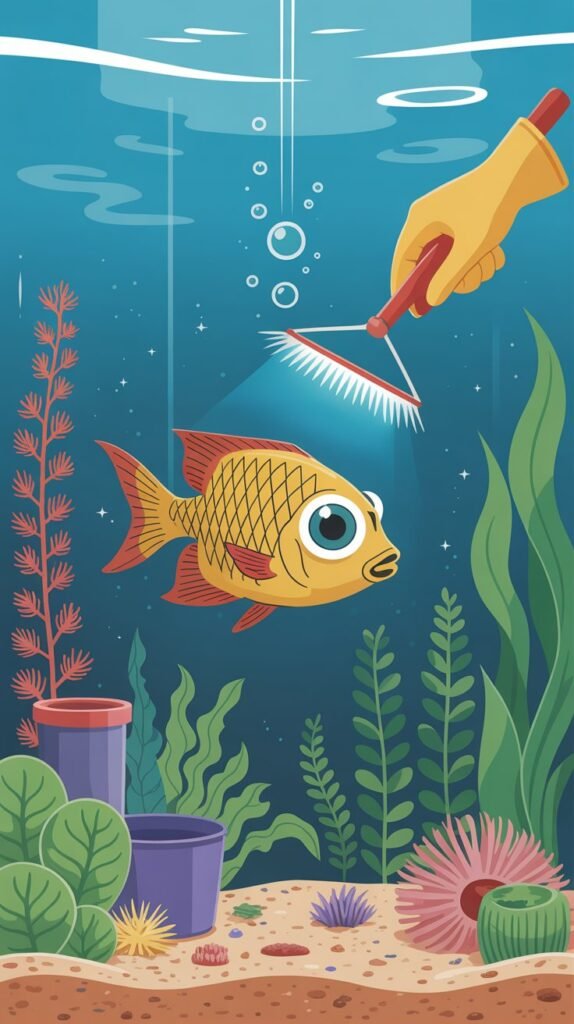
- Introduce Algae Eaters – Snails, shrimp, and certain fish (like Plecos or Otocinclus) help control algae.
- Live Plants – Absorb nitrates and improve water quality.
- UV Sterilizers – Reduce algae blooms and harmful bacteria.
- Automated Gravel Vacuums – Make cleaning large tanks easier.
- Aquarium Maintenance Schedule – Keep a journal of water tests and cleaning tasks.
Benefits of Regular Aquarium Cleaning
- Longer lifespan of fish.
- Reduced algae growth.
- Stable and balanced ecosystem.
- Beautiful, crystal-clear water.
- Peace of mind knowing your fish are healthy.
Conclusion
Aquarium cleaning is not just a chore—it’s an investment in your fish’s health and your aquarium’s beauty. By following the right steps, using proper tools, and avoiding common mistakes, you can maintain a thriving aquatic environment. Whether you are a beginner or an experienced hobbyist, regular maintenance ensures your aquarium remains a stunning centerpiece in your home.
FAQs on Aquarium Cleaning
Q1: How often should I clean my aquarium?
Most aquariums require weekly or biweekly partial water changes (20–30%) along with regular gravel vacuuming and filter maintenance.
Q2: Can I use soap to clean my aquarium?
No. Soap and detergents are toxic to fish and can leave harmful residues. Always use aquarium-safe cleaning methods.
Q3: Do I need to remove fish when cleaning?
Usually not. Fish can stay inside during water changes and gravel cleaning. Only remove them if performing deep cleaning or rearranging decorations.
Q4: What happens if I don’t clean my aquarium?
Neglecting cleaning leads to ammonia spikes, algae overgrowth, cloudy water, and unhealthy conditions for fish.
Q5: Can live plants reduce the need for cleaning?
Yes, live plants absorb waste nutrients like nitrates, helping reduce cleaning frequency. However, cleaning is still necessary.
Q6: How do I know if my aquarium needs cleaning?
Signs include cloudy water, algae buildup, fish gasping at the surface, and unpleasant odors.
Q7: Should I clean my filter every time I change the water?
Not necessarily. Rinse filter media in old tank water once every 2–4 weeks, depending on tank size and bioload.

